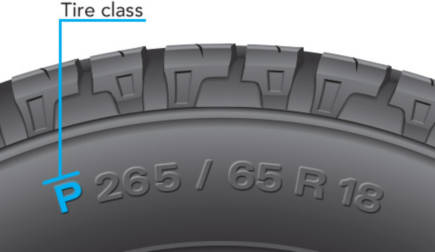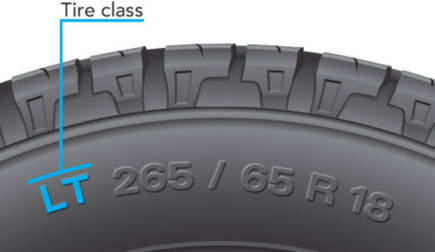PASSENGER TIRES AND LT TIRES
If you’re asking yourself, what’s the difference between these tire types, you’re not alone. Here’s the skinny: it’s all a difference in tire construction.
Passenger tires are designed for use on lighter-weight vehicles such as regular passenger cars, minivans, crossovers and smaller pickups or SUVs.
LT tires are built with tougher constructions, hardier rubber compounds and higher load-carrying capacities because they’re designed for heavier vehicles like larger trucks, SUVs and commercial vans.
They’re also the tire type du jour for off-road enthusiasts because their extra-durable carcass provides more puncture resistance, which gives a much-needed boost in confidence when leaving the road behind.
So, let’s dive into the details to figure out how and why they’re so different.
Passenger Tires
As the name indicates, passenger tires are designed for standard passenger vehicles, including lighter trucks and SUVs. These tires ensure a smoother ride and exceptional traction in wet and dry conditions, all while providing adequate load-carrying capacity for lightweight vehicles.
They aren't designed to support, tow, or haul heavier loads, so they shouldn't be used on heavy-duty light trucks, large SUVs or commercial vans.
While they're the perfect choice for the average vehicle, using passenger tires incorrectly can cause pretty serious issues.

If used on a heavier vehicle, like ¾ or 1-ton truck, they won't be able to support the weight of the vehicle, much less any additional load it might be carrying. And because they're designed for comfort, passenger tires typically don't perform as well in aggressive off-road conditions, particularly since they're usually not as puncture-resistant as LT tires. (Keep in mind, there are exceptions designed to give crossovers and smaller SUVs reliable off-road grit without compromising their on-road performance.)
Light Truck Tires
On the other hand, LT tires are built with a rugged carcass, including more, thicker plies and sidewall reinforcements. Why?
Because they're engineered to support not only the weight of larger trucks, SUVs and vans, but also the higher carrying demands that those vehicles come with. That means you can wrangle heavy loads and tow without a worry.
Because LT tires come with higher load-carrying capacities and a more robust construction, they're far more rugged and durable than your average passenger tire, making them perfect for extra weight and tough road conditions.

However, there are some tradeoffs. Because of their stiffer sidewall, LT tires don’t absorb bumps very well, causing more vibrations and road noise, particularly in lighter trucks and SUVs. That’s why we typically only recommend using LT tires on larger trucks, SUVs and vans, or for use in off-road conditions.
That’s right: because LT tires have thicker, reinforced sidewalls for heavy-duty use and challenging driving conditions, they’re a great choice for off-road use. That’s why most all-terrain tires and mud tires are LT rather than the standard p-metric designation.
(Learn about the difference between mud tires and all-terrain tires!)
When installing LT tires on your off-road rig, it’s important to pay attention to the tire’s load range.
While having the LT designation means you have a tougher tire, unless you’re dealing with towing or hauling, you likely don’t need the highest load range. A lower load range will still give you the durability you need while keeping your ride relatively comfortable when you’re commuting to the trail.
It’s important to ensure that your tires have the correct load range/load index for your vehicle. If your tires aren’t rated to support your vehicle, you risk tire failure, not to mention uneven treadwear.
If you have any questions or require any assistance, stop by any of our America's Tire locations and we'll get you taken care of! Customers who buy and book online save time in-store!
